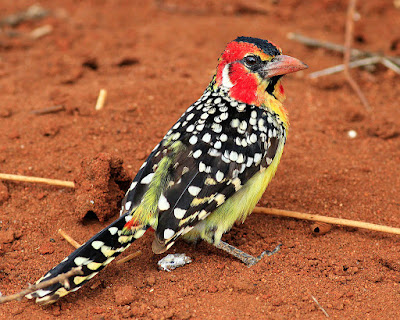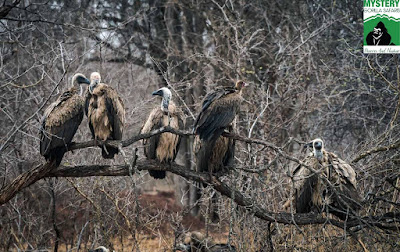Kenya: Birding with a Camera (BwC - 9 days)
$7950; single supplement: $600
This is a Birding with a Camera
Tour (BwC). You try to balance seeing as many birds as possible while also
trying to take great photos of them. You still target endemics and other
specialties. You will also try to see and photograph other animals if any are
around, especially large mammals in Kenya’s famous national parks.
If you are looking for a
traditional Birding Tour, you should check out our Kenya: The Coolest Trip in
Africa tour.
Kenya is famed for its wildlife,
and it is full of incredible photographic opportunities and subjects. This trip
is designed to be short and affordable, attainable for people whose vacation time
or budget wouldn’t normally allow them to get to Africa. And this trip will be
a wonderful introduction to the continent for any photographer. You range from
the remarkable gem of Nairobi National Park down into the Great Rift Valley,
then to the classic safari destination of the Masai Mara. You will blow through
many memory cards daily, and keeping up with managing your photos will be more
of a hassle than finding suitable subjects in these premier big-mammal and
birding destinations!
Day 1: Arrival (Kenya).
You arrive in the Kenyan capitol, Nairobi.
Day 2: Nairobi to Nairobi National Park to Nakuru.
You enter Nairobi NP as soon as the gates open,
and spend a full morning exploring this gem of a park right on the outskirts of
this huge city. Here you have a chance to sight a range of big mammals
including most of the “big 5”. This park is especially good for lions and
giraffes, sometimes even against the high-rises of downtown Nairobi! There is
also the abundant and colorful birdlife typical of the African savannah. After
lunch, you head down into the Great Rift Valley. In the late afternoon, you
arrive at another of Kenya’s gems, the impressive Nakuru NP, which is often
painted pink by millions of flamingos, giving every photo a haze of cerise.
Day 3: Nakuru NP.
With a
full day to explore Nakuru, you will focus on rhinos. Both white and black
rhinoceros occur here in good numbers, and one can often find these prehistoric
beasts drinking with a haze of flamingos for an awesome photographic backdrop.
There are also bountiful antelope, and good chances at lion and leopard. On the
bird front, are 1000s of pelicans, storks, herons, flamingoes, and shorebirds.
The adjacent woodlands hold their own set of species like barbets, woodpeckers,
honey guides, and starlings.
Day 4: Nakuru to Lake Naivasha.
After a final morning in Nakuru, you head towards Lake Naivasha, a stunning
Rift Valley Lake full of birds and mammals. A leisurely boat trip on the lake
in the afternoon will provide plenty of photographic opportunities of mammals
and birds at very close quarters. Here you will wander amongst the many
giraffes, waterbuck, and gazelles that feed on the lake shores. There are few
predators here and the tame animals offer phenomenal photographic
opportunities. Hippopotamus lounge in the languid waters, Pied Kingfishers,
herons, and storks frequent every secluded bay, and flotillas of pelicans pass
by loafing crocodiles. Before you know it your several hours on the water will
be over.
Day 5: Naivasha to Masai Mara.
The boat trips on Naivasha are so good that you are going to do another one on
this morning! There will be different light, a slightly different mix of
species, and undoubtedly a lot of great new photo opportunities. In the late
morning, you leave the Rift Valley and head west, reaching the Masai Mara area
by evening.
Days 6-8: Masai Mara.
The
Mara, the northern portion of the magnificent Serengeti system, offers
spectacular vistas over flat-topped acacia and grassy plains riddled with
ungulates and other animals. You’ll spend three full days in the reserve
looking for East Africa’s famous Lions, Leopards, Cheetahs, African Elephants,
gazelles, and other wildlife. However, bird photography does not take a back
seat, and you should be rewarded with views of many large raptors and vultures
that gather at the kills, as well as storks, Kori Bustard, Southern
Ground-Hornbill, and other species that suffer from disturbance outside these
large protected areas. Other highlights may include Rufous-bellied Heron,
Saddle-billed Stork, Temminck’s Courser, Sooty Chat, and Schalow’s Turaco.
There is never a dull moment in the Mara. Often it’s a matter of choosing which
amazing photo opportunity to take advantage of… elephants on one side of the
vehicle, and a teed-up barbet on the other!
Day 9 Mara to Nairobi.
After a couple hours of photography around our lodge, you’ll head towards
Nairobi, where you’ll end the trip, undoubtedly laden down with myriad
excellent images, and the memories to match!
____________________
TRIP CONSIDERATIONS
PACE: Moderate. For all
photography you will need to be up early, around 6 am, and stay out late,
around 5 pm, in order to take advantage of the best light. Where possible you
will use the middle of the day to rest up, or travel between localities. There
will also be a few days that are full days in the field. Kenya is a decent
sized country but the road infrastructure is good and getting from A to B does
not take that long; there are fairly long drives of 4 to 6 hours on day 5 and
day 9. There will be packed lunches on many days; but sitting with a packed
lunch for a siesta under a tree is often a far more relaxing way to do things
than spending a long time driving back to the lodge for lunch, only to head out
again in two hours.
PHYSICAL DIFFICULTY: Easy. There
is little walking on this tour, and much of the photography will be car-based
in protected areas, where large mammals lurk. You can do a little bit of
walking at Lake Naivasha, where you can expect to walk about 1 mile (1.5
kilometers) a day.
CLIMATE: Very comfortable
(usually 53°-81°F, 11°-27°C). Rain is possible, but if it does occur it will
only likely be brief showers.
ACCOMMODATION: Very good to
excellent (some of the lodges are truly superb), all have private en-suite
bathrooms, and full-time hot water. Electricity is available everywhere 24
hours a day. Internet is fairly widespread, but not available everywhere.
WHEN TO GO: You often run our
set-departure in June-July during the migration, when there is a better chance
of wildebeest river crossings. It is dry though, and some of the birds are not
in their best plumage, so if you wanted a custom tour that focused more on
birds, the optimum period would be February – May; earlier in that window there
are many migrants in Kenya adding to the number of possibilities.
PHOTO PHILOSOPHY: The majority of
our photography will be from the vehicle, and from a boat at Lake Naivasha.
Secondarily, you’ll be seeking out subjects on short walks around our lodges.
Mammals and birds are the main targets. There are also some opportunities for
landscape photography, and chances for macro work on foot around the lodges.
GEAR: Zoom lenses work well on
safari. Many subjects will be extremely close or at moderate range, while some
will be far. A good strategy is to use one body with a big lens (500-600 mm),
and another with a fairly wide zoom (e.g. 100-400 or 70-300). In general night
drives aren’t allowed, so a flash is not extremely important. Tripods will be
of limited utility, since you’ll be shooting mainly from the vehicle, and
normally with lots of light. On the other hand, bean bags and other such ways
of stabilizing lenses inside of a vehicle, and on the roof of the vehicle, will
be very useful.
OTHER INFO:
TRAVEL REQUIREMENTS: A valid
passport is required; the passport must be valid for at least six months past
your intended stay. Tourist visas are required of most nationalities, but since
September 2015 most nationalities can get an online e-Visa (must be obtained at
least 10 days prior to travel), including citizens of US, Canada, UK,
Australia, New Zealand, Japan, India and China, most European countries, and
many others. Travel requirements are subject to change; it’s a good idea to
double check six weeks before you travel, or check with our office if you are
unsure.
WHAT’S INCLUDED?: Tips to
drivers, local guides, and lodge/restaurant staff; accommodation from the night
of day 1 to the night day 8; meals from dinner on day 1 (unless you arrive too
late for dinner service) to lunch on day 9; reasonable non-alcoholic drinks
with meals; safe drinking water between meals; photography tour leader with
audio playback gear from the evening of day 1 to the afternoon of day 9; one
arrival airport transfer per person specifically on the arrival day (transfers
may be shared with other participants of the same tour if they arrive at the
same time); ground transport for the group to all sites in the itinerary from
day 2 to mid-day of day 9 in a suitable vehicle; entrance fees to sites
mentioned in the itinerary; one boat trip on Lake Naivasha; a printed and bound
checklist to keep track of what you have seen and photographed (given to you at
the start of the tour – only electronic copies can be provided in advance).
WHAT’S NOT INCLUDED?: Optional
tips to the tour leader; tips for luggage porters at hotels (if you require
their services); flights; snacks; additional drinks apart from those included;
alcoholic beverages; travel insurance; excursions not included in the tour
itinerary; extras in hotels such as laundry service, minibar, room service,
telephone calls, and personal items; medical fees; other items or services not
specifically mentioned as being included




Comments
Post a Comment